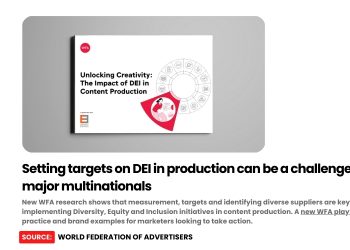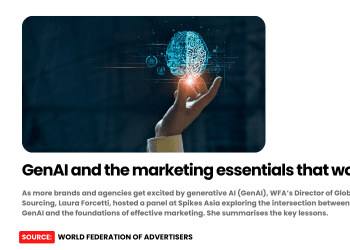The WFA marketing team share their predictions for what the next 12 months hold for brands.
1. Re-roster
With three quarters of WFA members saying they plan to review their agency rosters in 2018 and with 87% saying they are rethinking their programmatic models, next year looks set to be another active one for client-agency relations. In the past this has tended to mean more RFPs, but that doesn’t have to be the case. We expect to see more, rather than fewer, roster models- perhaps as many different models as there are company-specific requirements. The emphasis on making these new relationships work fall on the shoulders of agencies and clients alike. Clients will need to consistently demonstrate real leadership if they are to effectively partner with their agencies and enable collaborative relationships between agencies to deliver business results. RD
2. Re-work remuneration
When we asked WFA members what the top five key characteristics they would want to see in an agency roster of the future, the number one response was “agencies working as true business partners”. Easy to say but what does this mean in practise? The answer probably means a commitment to new remuneration models focused on common business metrics. This could mean big changes for both clients and agencies, potentially costing the client more and requiring a great deal more trust of their agencies. Clients have long referred to agencies as our ‘partners’. Time will tell if partnership goals are reflected by client investment. RD
3. Reprogramming digital
The programmatic market has been developing at breakneck speed. In 2017 we’ve seen considerable change to how clients go to market, with much more focus on ‘disclosed’ operating models. In 2018 the challenges are regulatory. New WFA research tells us that a priority for 8 in 10 client-side media directors in 2018 will be ensuring programmatic approaches are fit-for-purpose post GDPR and ePrivacy. The programmatic industry has been highly reliant on third-party data, which require limited consent to collect. This is all set to change next year, and radically so within the ad tech sector. Work is underway to establish new processes and ways of working, but expect a huge shake-up as the clock counts down to May 25 when GDPR comes into force. MG
4. Re-staffing media
Much has been said about marketing ‘transformation’ but recently we’ve witnessed a real appetite for change among client-side media teams. WFA research has identified that the most common approach to staffing media is via ‘generalist’ resource; generalists will likely always have a place not least in the most visible role of Chief Media Officer. But 87% agree that as the complexity of media increases, more specialists will be required. In 2018 we predict the steady growth of data and technology specialists being recruited to support Chief Media Officers. We also anticipate that clients will continue to interrogate their global media operating model to establish the optimum balance of internal capability and external support. Deutsche Telekom’s “innovative and progressive” review, which has seen agency scope significantly fragmented and more roles and responsibilities being taken-in-house, is a good example of this and we expect to see more in 2018. MG
5. Digital clean-up
2017 has been marred by major fraud and brand safety concerns. The clean-up job is underway with initiatives such as ads.txt and the Trustworthy Accountability Group (TAG). There is also growing interest in what blockchain can do to bring greater transparency to various components of the digital media supply-chain and we’re starting to see new companies establish themselves as early specialists in the field. This may not be ready for rollout just yet, but according to our research clients are looking at this closely. We predict that the narrative around this will develop rapidly in 2018, with serious implications for the supply chain. MG
6. Re-think sourcing
Marketing procurement’s relationship with their marketing stakeholders hasn’t always been straight-forward. Some marketers boast of having enlightened sourcing colleagues. Others are less sympathetic. As more procurement functions achieve a certain level of maturity, 2018 will likely see many of these organisations move to the next level; developing into organisations which are more accountable, go beyond simple cost savings and evolve their approaches to ones that deliver tangible value to their marketing stakeholders and, more excitingly, to their overall organisation’s business results. Having marketers and their procurement colleagues share aligned growth goals could be a real game changer. RD
Source: WFA









